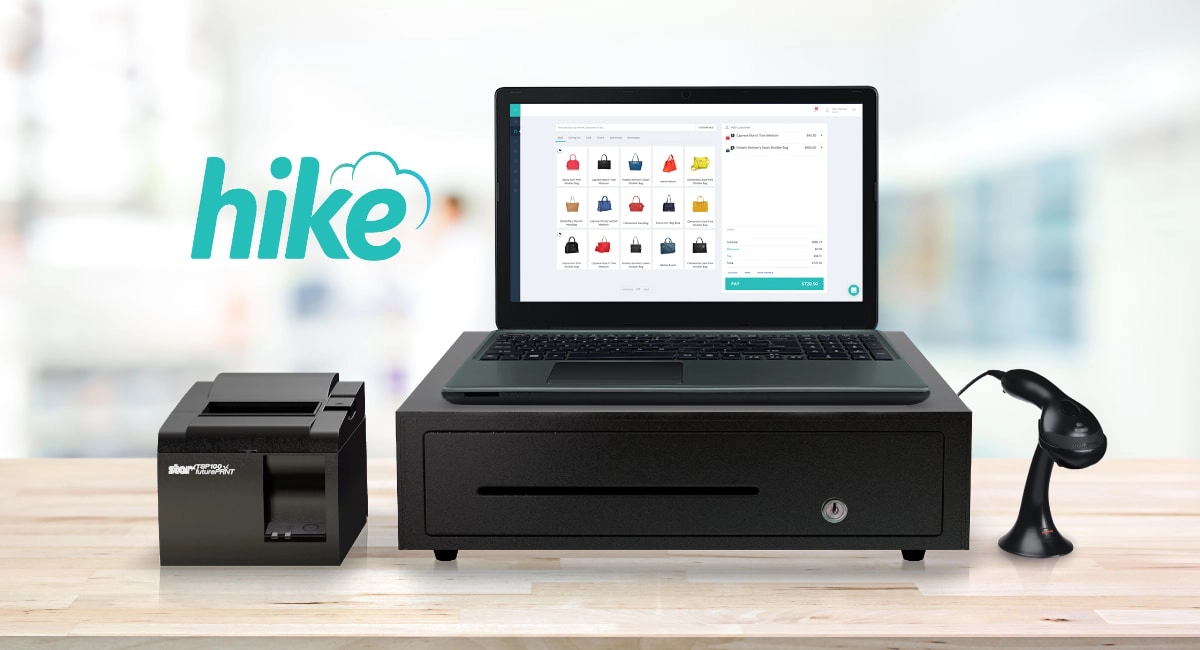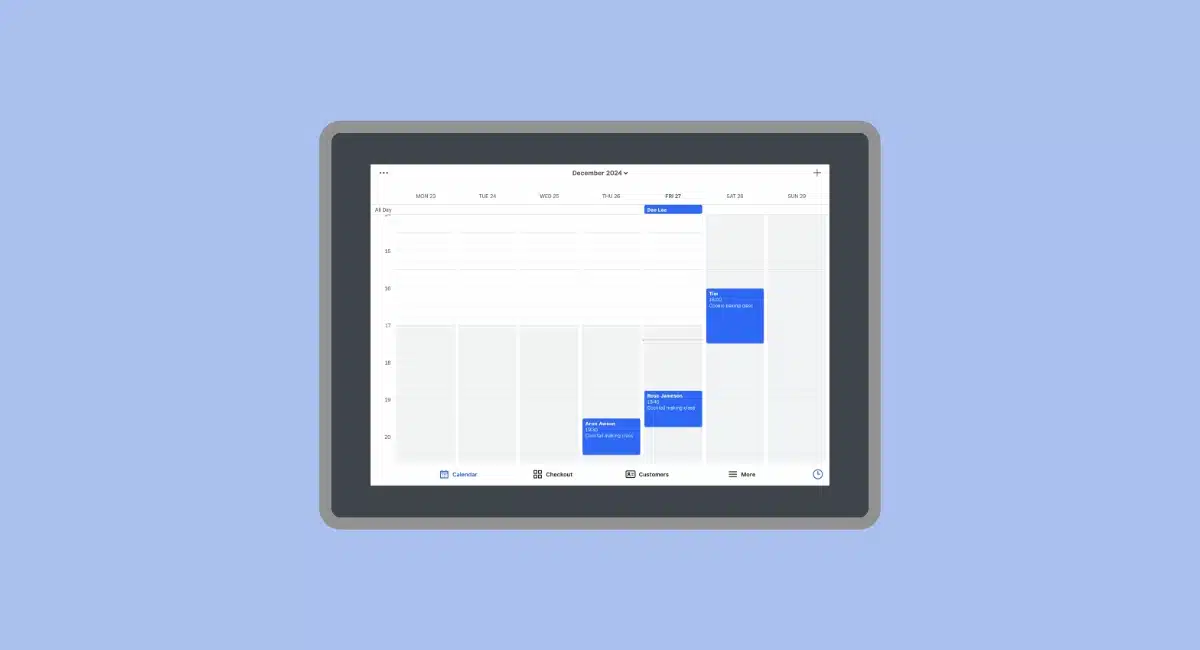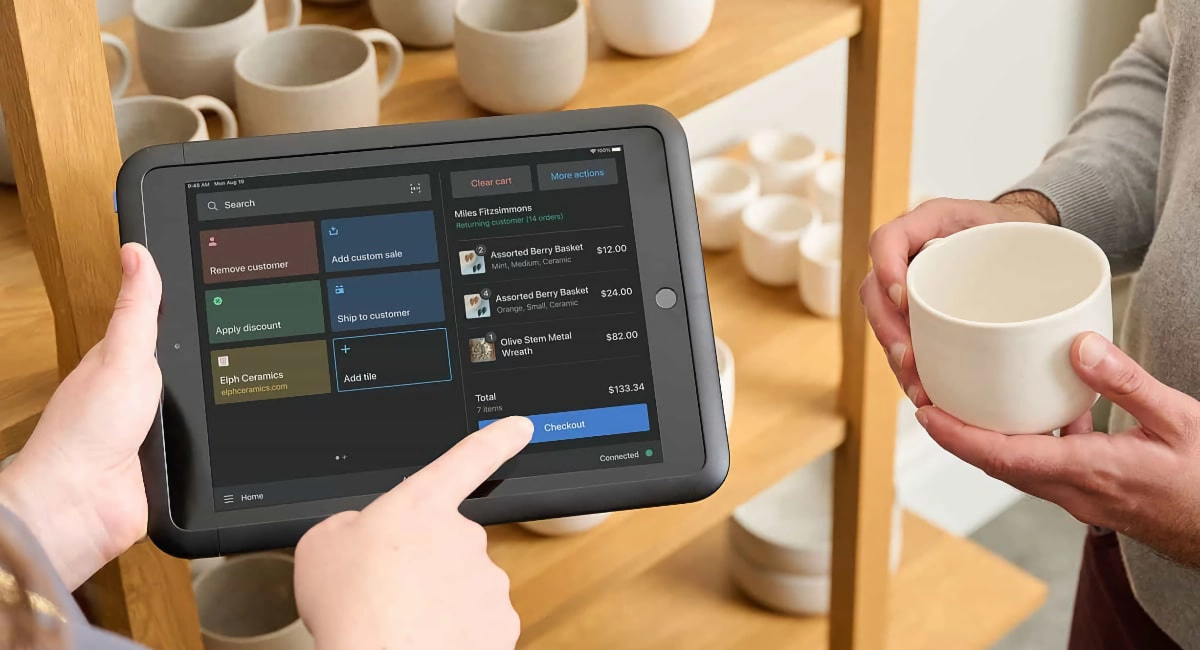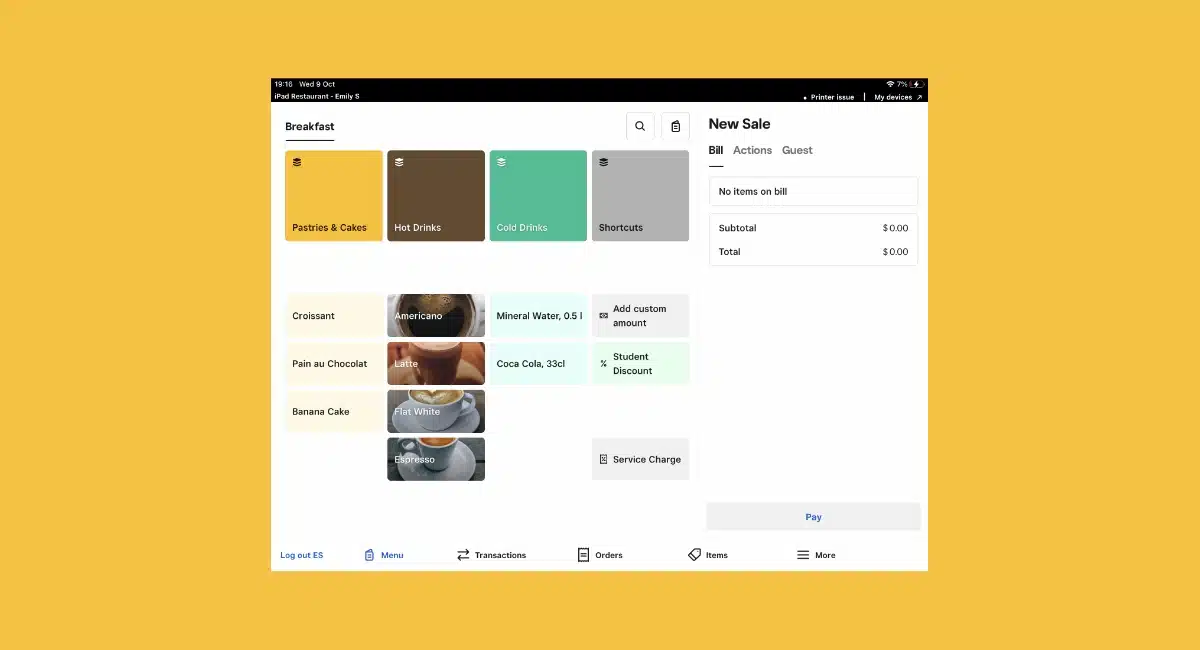- Highs: 24/7 messaging support. Works on (non-touchscreen) computers and iPad. No lock-in contract. Offline mode.
- Lows: Limited till licences per plan. Not for Android. No integration with traditional card machines.
- Best for: Small, busy retail shops needing cost-effective POS software that works on computers too.
What is Hike POS?
Hike is an Australian, cloud-based retail POS system that’s also available in the UK, US, Canada, New Zealand and Europe. It is designed for retail, not hospitality.
The software works on iPad, Mac and PC and integrates with Tyro, PayPal Here, Square, Westpac, Zip Pay and Afterpay for card payments.
The POS system is comparable to similarly-priced Australian options for retailers, with round-the-clock support on all plans.
Pricing
As with most cloud POS-based systems today, the Hike POS pricing is based on a monthly or annual subscription without contractual commitments.
Paying monthly is more expensive than paying every year upfront (see table below), but you won’t get a refund for subscription payments, so there is still an element of commitment.
| Subscription | Pay-monthly* | Pay-yearly* |
|---|---|---|
| Start-up (1 outlet, 1 till) |
AU$69/mo | AU$708 upfront (AU$59/mo) |
| One store (1 outlet, 1 till) |
AU$99/mo | AU$948 upfront (AU$79/mo) |
| Multi-store (unlimited outlets, 2 tills) |
AU$199/mo | AU$1,908 upfront (AU$159/mo) |
| Per extra till (any plan) |
AU$39/mo | AU$348 upfront (AU$29/mo) |
*Pricing includes GST.
| Pay- monthly* |
Pay- yearly* |
|---|---|
| Start-up (1 outlet, 1 till) | |
| AU$69/mo | AU$708 upfront (AU$59/mo) |
| One store (1 outlet, 1 till) | |
| AU$99/mo | AU$948 upfront (AU$79/mo) |
| Multi-store (unlimited outlets, 2 tills) | |
| AU$199/mo | AU$1,908 upfront (AU$159/mo) |
| Per extra till (any plan) | |
| AU$39/mo | AU$348 upfront (AU$29/mo) |
*Pricing includes GST.
The ‘Start-up’ plan covers one outlet and one till licence, but you can pay for any number of extra register licences. You are, however, limited to using Start-up at one outlet only.
The ‘One store’ plan also covers one outlet and one till only, but extra tills can be added here too.
The ‘Multi-store’ plan covers unlimited locations, but only includes two till licences, so you still need to pay per extra till beyond this.
Hike POS does not charge extra for integrating with a card reader. You only pay the transaction fees applicable to your chosen payment provider, e.g. Tyro or Square.
Square doesn’t have monthly costs, just a fixed rate of 1.6% per Square Reader transaction. Tyro, on the other hand, rents out EFTPOS terminals with a monthly fee and different rates per transaction.
Setting up and ease of use
Setting up Hike POS is like setting up most iPad tills today. You simply sign up for a free 14-day trial by submitting basic personal details via a simple online form. Then you’re free to download the POS app on an iPad or use the checkout screen on a computer.
Now, we’ve tested a lot of POS systems on iPad, and this is one of the few platforms with dummy products already entered (if you choose to use dummy data to test) to save you time from creating new products for a test run through the checkout.
Some functions are preset, but you’re not pressured to decide on all the settings in one go. Right from the start, you pick a currency for all prices and sales reports. Selecting Australian dollars automatically adds GST as the default tax in the system, but you’re free to add other taxes.
Image: Mobile Transaction
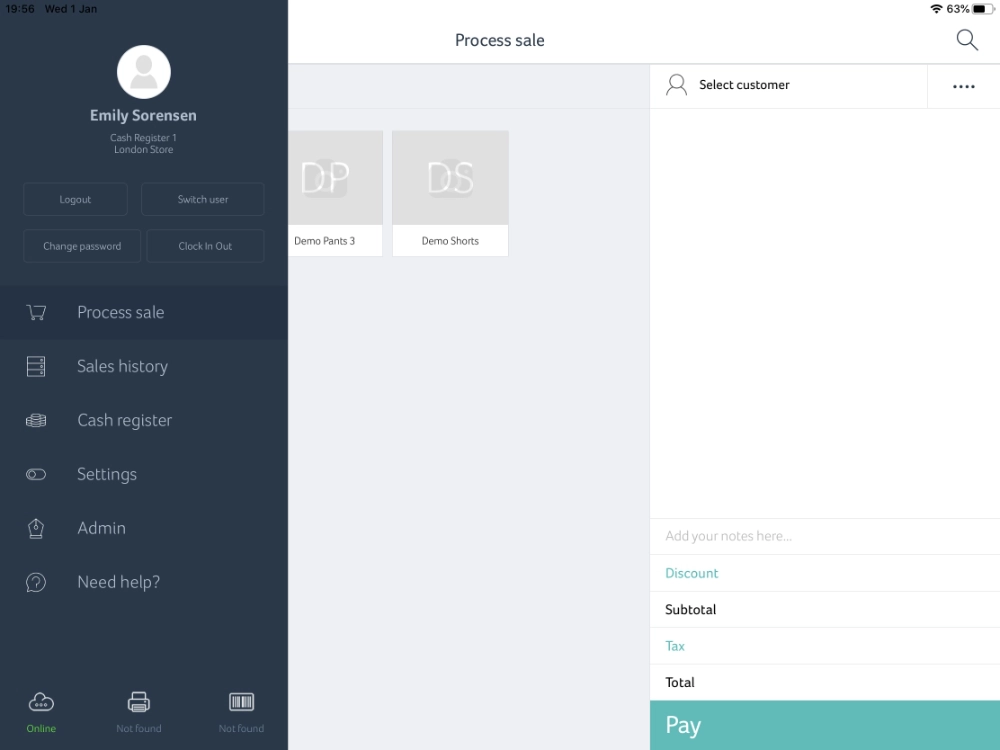
Hike POS side menu on iPad.
Admin settings are accessed in the back-office account through any internet browser or the side menu in the iPad app (pictured above). Whatever device you’re using, the same breadth of features are accessible, which is user-friendly in itself.
The checkout screen is pretty standard – not that beautiful, but the grid layout of products with images makes it quicker to grasp what to add to the cart, compared with a simple colour coding in place of product images. Some text elements are small and thin, so those with poor vision may struggle to read certain buttons and lines of text.
The Hike POS checkout is faster to manoeuvre on iPad compared to laptop, since it is optimised for touchscreens. You can, however, use a barcode scanner with a computer, which would speed up sales.
We didn’t have any issues understanding the admin account or POS interface – in fact, the till app seemed quite simple. It is only when you add all your products (which can be bulk-imported from a CSV file), customer data, payment options, outlets, till hardware, till users and so on that the system’s full complexities show.
POS features
All Hike plans allow you to add an unlimited number of products, users and customers to the system. The following Hike POS app features are included on all subscriptions:
Product management: Bulk-import products from a CSV file or add them manually to the Hike system (can also export products). You can add variants, composite products, types, tags, brands, SKUs, barcodes and supplier codes.
The system can track all or individual products, and you can decide whether to allow sales of inventory despite being out of stock. Stocktakes, purchases and returns can be recorded.
Checkout options: Offer discounts, refunds, gift receipts or lay by a sale from the checkout screen. Taxes will show automatically, but can be edited in the back-office account. You can create custom sales too, including product description, custom price and additional details.
Image: Mobile Transaction
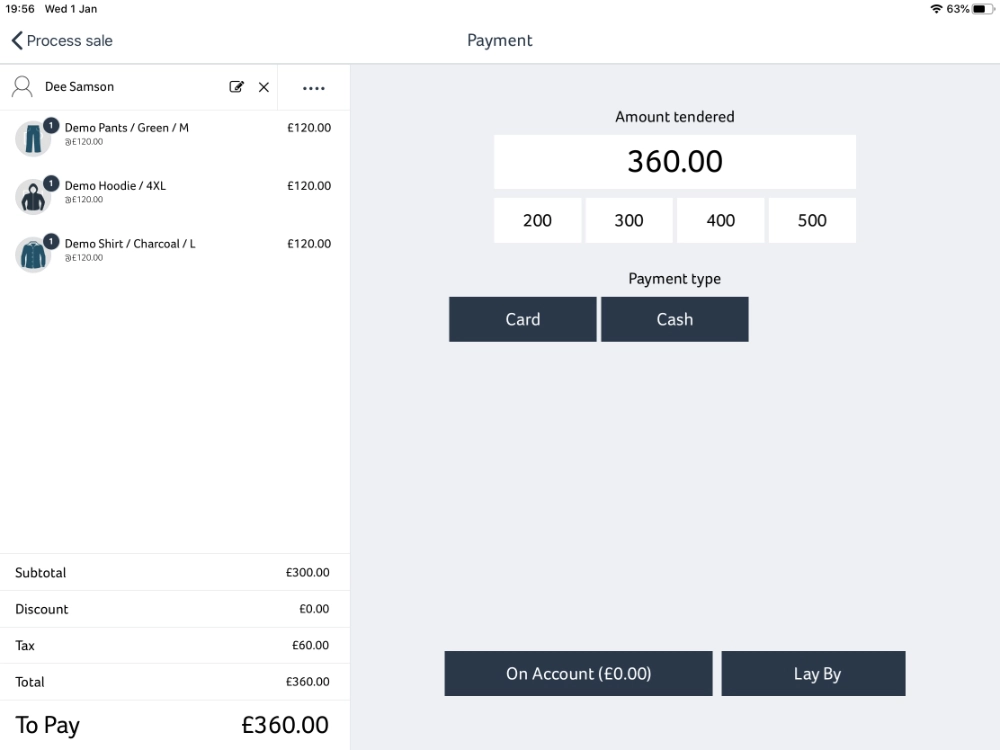
Hike’s payment screen is similar to other retail POS checkouts.
Payment options: Pay by credit and debit cards (with an integrated or non-integrated card machine), cash (with management of cash drawer float), and custom payment types.
Customer management: Customers can be added to the system as ‘customer profiles’, allowing you to group them into appropriate categories and track their sales.
Staff management: Keep an overview of rosters and create user accounts with passcodes for the POS software. Divide users into admin, manager and cashier accounts with differing permission sets.
Image: Mobile Transaction

Customer profiles can be viewed (with purchase history), added and edited from the checkout.
The above features are all on the cheapest plan, ‘Start-up’. What additional features do you get on the pricier subscriptions? Here’s where the plans differ:
| Feature | Start-up | One store | Multi-store |
|---|---|---|---|
| Integrated label printing | |||
| ‘On account’ sales | |||
| Credit notes / store credits | |||
| Delivery dockets | |||
| Gift cards | |||
| Customer loyalty features | |||
| Customer-tiered pricing | |||
| Advanced user permissions | |||
| Custom reports | |||
| Detailed analytics | |||
| Multiple stock locations | |||
| Stock transfers | |||
| Multi-outlet user permissions |
| Start- up |
One store |
Multi- store |
|---|---|---|
| Integrated label printing | ||
| ‘On account’ sales | ||
| Credit notes / store credits | ||
| Delivery dockets | ||
| Gift cards | ||
| Customer loyalty features | ||
| Customer-tiered pricing | ||
| Advanced user permissions | ||
| Custom reports | ||
| Detailed analytics | ||
| Multiple stock locations | ||
| Stock transfers | ||
| Multi-outlet user permissions | ||
In short, the One Store subscription has more elaborate stock management options, payment options, user permissions, customer loyalty features, sales reports and analytics than Start-up. The only additions to the Multi-store subscription are the multi-store functions required to manage several outlets.
What about add-ons? All plans allow you to integrate with ecommerce (Shopify, BigCommerce or WooCommerce), cloud accounting software (Xero or QuickBooks) and MailChimp, but only One Store and Multi-store connects with Amazon Marketplace.
No other additional integrations are officially available, but Hike says they may be able to set up alternative integrations if you get in touch.
Online and offline use
Hike POS works best online. That is, your iPad and computers are updated online in real time via the internet so all transactions and stock information are correct regardless of which device you’re checking it from.
You can, however, also use the software offline. When next connected to the internet, transactions will then save in the cloud and resume syncing in real time.
That said, card payments will require a WiFi or network connection to process through one of the compatible card readers. Some traditional card machines can process cards offline, which is an option if you don’t need the card terminal to work automatically with the till.
Hardware and payments integration
In Australia, Hike can be integrated with the following card terminals:
- PayPal Here
- Square Reader
- Tyro EFTPOS machines
- Westpac Presto
Integrated card payments mean that when at checkout you choose cards as the payment option, the connected card reader will automatically turn on and display the correct transaction total. When the customer has inserted or tapped the card, and entered a PIN if relevant, the POS system registers this payment automatically.
You can also use a standalone card machine in conjunction with Hike POS, but then you have to enter the transaction total on the card terminal and manually confirm in Hike when the card has been processed.
Alternatively, you can connect Afterpay or Zip Pay to the Hike point of sale, so in-store customers can buy now and pay later, interest-free. This is increasingly becoming a popular way to pay, so these options are a great addition to the payment methods.
Photo: Hike POS
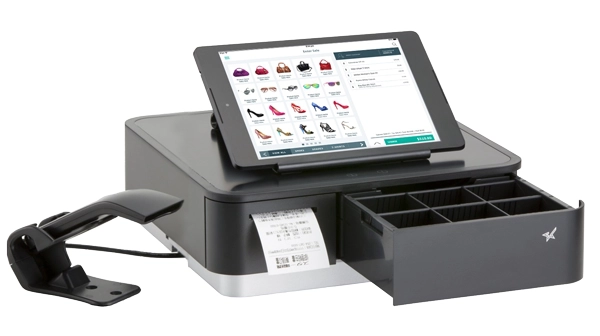
Hike POS on iPad, connected with an mPOP cash drawer/receipt printer and barcode scanner.
What about other hardware? The Hike interface works on iPad or iPad Mini, but also computers (PC or Mac). The latter is a real bonus, as many low-cost POS systems do not work on non-touchscreen computers. With Hike, you can process transactions straight from your laptop if that is all you have.
Furthermore, you can connect the software with receipt printers (Star Micronics and Epson models), cash drawers (standard models and Star mPOP), barcode scanners and a Bluetooth keyboard. Make sure to check with Hike whether a piece of hardware is compatible if it is not one of their listed models.
Ecommerce integration
All the Hike subscriptions allow you to connect the POS system with an online store built on one of the following platforms:
- Shopify
- BigCommerce
- WooCommerce
Any of these integrations are ready to implement for free, after which online and in-person transactions, customer records and stock information are synced across platforms in real time. It differs in how complex the synchronisation is between the various platforms, so do check with Hike if certain features – such as store pick-up for click and collect orders – are perfectly aligned.
Whichever software you connect, an ecommerce subscription and any online transaction costs are paid separately to your chosen ecommerce platform.
Image: Hike POS
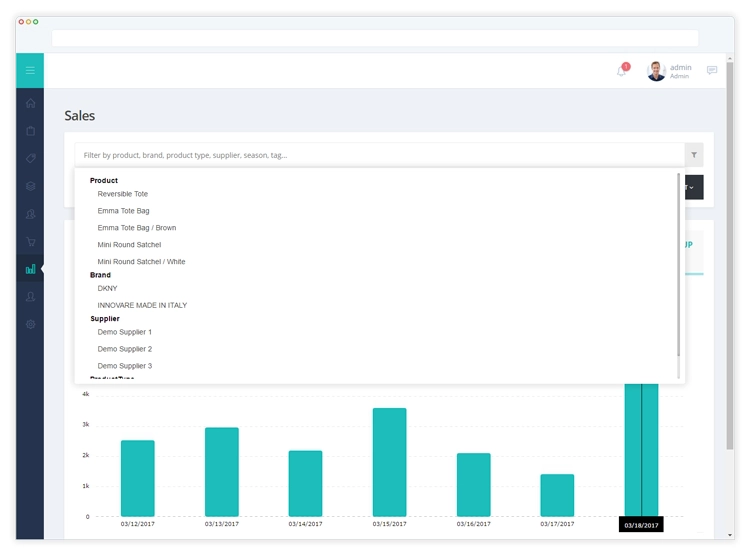
You can filter what things to analyse in Hike’s sales reports.
If this isn’t enough, you can integrate the POS system with Xero or QuickBooks Online accounting programmes for accounting features, and payroll too if using QuickBooks. A MYOB integration is also available in Australia.
When setting up Hike POS, you decide which currency to use for prices, so that would be AUD if based in Australia. Reports will thereafter display sales in AUD, although there were a few screens where we noticed $ was shown as a signifier of money in general. When integrating with Xero or QuickBooks, transactions are seamlessly synced in AUD.
Some users complain of glitches when integrating with accounting software, unhelpful customer service and certain features being limited, but compared to similar POS providers, this is not unusual.
There’s also a comprehensive Support Portal with step-by-step, illustrated guides and video tutorials to help you set up and resolve issues yourself. Some answers seem to be missing, such as a complete list of compatible hardware (Hike only “recommends” equipment models), but overall, you can get a lot out of the resources.
Our own experience of Hike’s free trial was smooth, and user reviews indicate an overall positive experience with the software and customer service. Some users complain of glitches when integrating with accounting software, unhelpful customer service and certain features being limited, but compared to similar POS providers, this is not unusual.
Who is Hike best for?
Hike POS is made for retailers, whether small and single-store or larger with multiple outlets. That said, Hike is not the most feature-rich of all retail POS systems – but it may be one of the best-value ones for a small-to-medium business.
If you’re just starting out and can’t afford an iPad just yet, Hike allows you to use any laptop for the checkout. That’s not an option for many low-cost POS solutions today, so Hike could easily be your entry point in that scenario. If you create a comprehensive product library and want to move to another POS system later on, you can then export the products when it comes to that.
Image: Hike POS
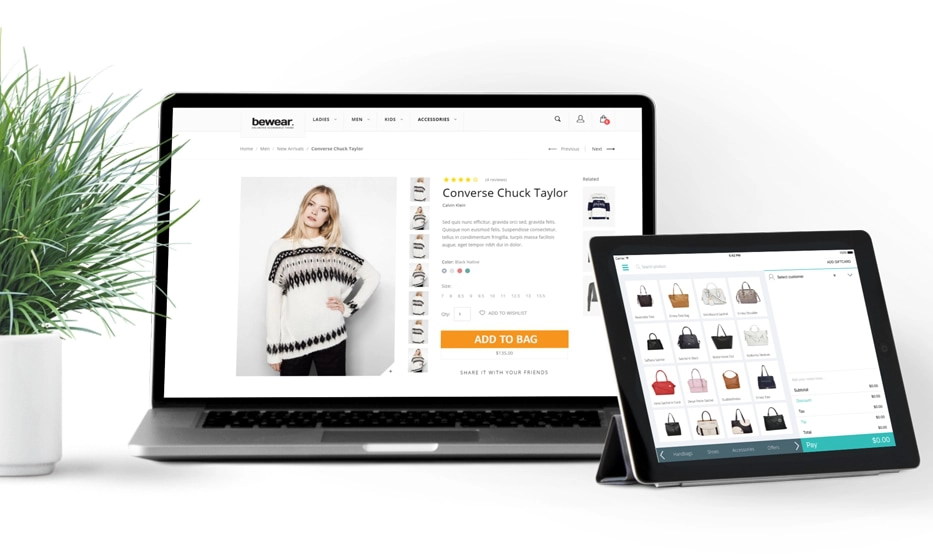
Hike can connect with a few ecommerce platforms.
Except for the one or two register licences included on each subscription, you pay extra to license each additional till point, so costs could rack up with many tills. Although this is normal, you should compare Hike POS with other retail systems to decide whether the breadth of features are worth the cumulative cost of multiple Hike POS tills if you’re a larger business.
Best retail alternative: Vend POS review – how does it compare?
Our verdict
There’s nothing particularly unique about Hike POS, but it has the important features for retail and offers good customer support. The software isn’t complicated, but can perhaps be seen as too simple in some areas.
Price-wise, it is competitive with other POS software for iPad, and is really good value if you prefer a PC or Mac till (it’s rare for affordable cloud POS systems to be compatible with this).
A downside is the limited options of integrations. You can only connect with a set number of accounting programmes and ecommerce options, albeit some of the most popular ones in Australia.
If you’re looking for the most flexible POS system with the most features, we therefore recommend testing the app thoroughly before relying on Hike as a long-term solution. Most small retail shops, however, should find Hike POS a decent option for their point of sale needs.

